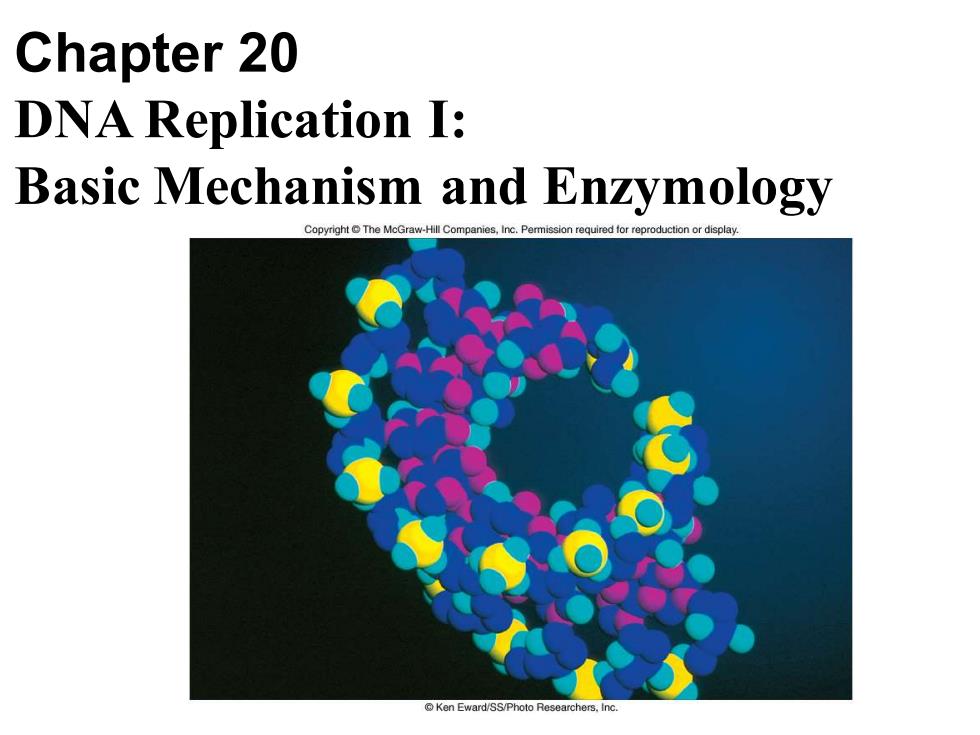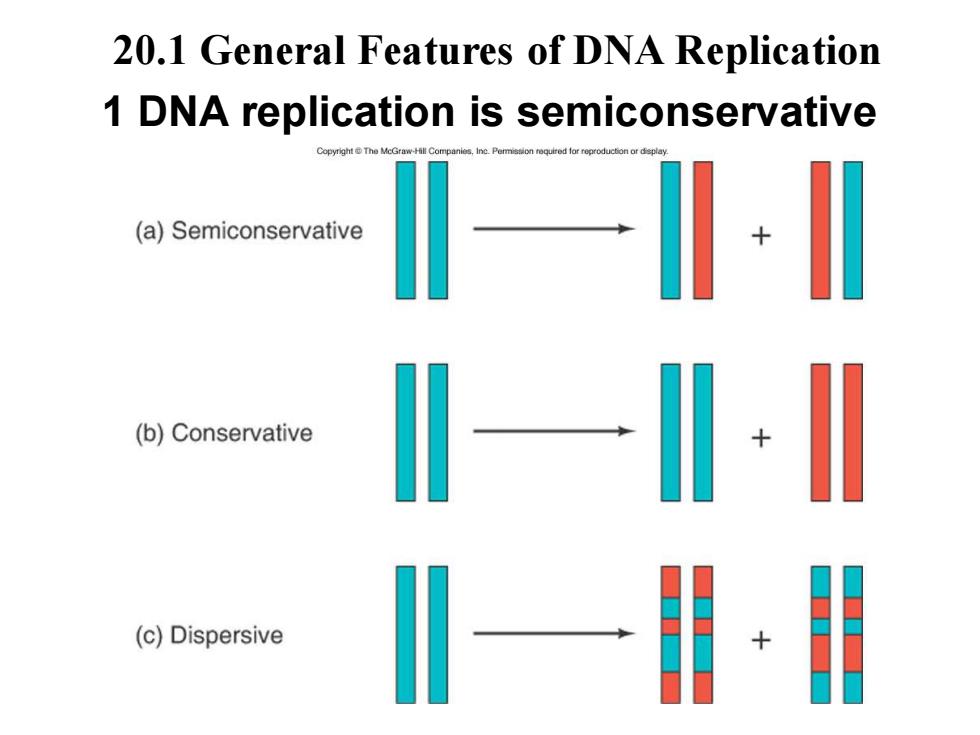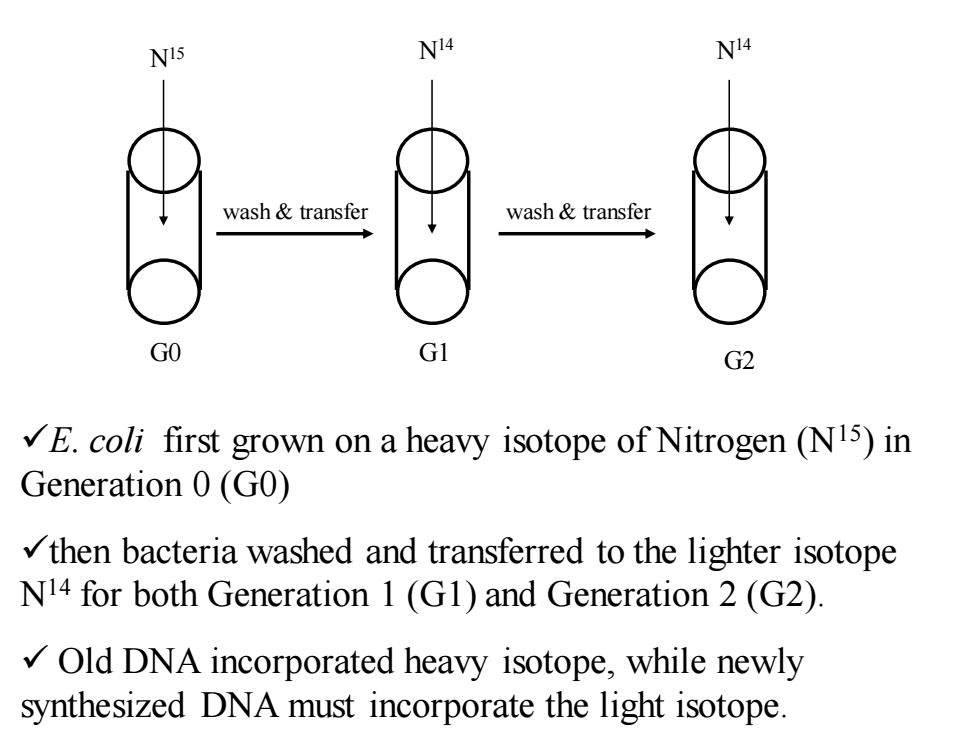
Chapter 20 DNA Replication I: Basic Mechanism and Enzymology CopyrightThe McGraw-Hill Companies,Inc.Pemmission required for reproduction or display Ken Eward/SS/Photo Researchers.Inc
Chapter 20 DNA Replication I: Basic Mechanism and Enzymology

20.1 General Features of DNA Replication 1 DNA replication is semiconservative (a)Semiconservative (b)Conservative (c)Dispersive
1 DNA replication is semiconservative 20.1 General Features of DNA Replication

Meselson and Stahl (1958)Demonstration of Semiconservative Replication Matthew Messelson Franklin Stahl
Matthew Messelson Franklin Stahl Meselson and Stahl (1958) Demonstration of Semiconservative Replication

NI5 NI4 Ni4 wash transfer wash transfer G0 G1 G2 E.coli first grown on a heavy isotope of Nitrogen (N15)in Generation 0(GO) then bacteria washed and transferred to the lighter isotope N14 for both Generation 1(G1)and Generation 2(G2). Old DNA incorporated heavy isotope,while newly synthesized DNA must incorporate the light isotope
✓E. coli first grown on a heavy isotope of Nitrogen (N15) in Generation 0 (G0) ✓then bacteria washed and transferred to the lighter isotope N14 for both Generation 1 (G1) and Generation 2 (G2). ✓ Old DNA incorporated heavy isotope, while newly synthesized DNA must incorporate the light isotope. wash & transfer wash & transfer N15 N14 N14 G0 G1 G2

Copyright The McGraw-Hill Companies,Inc.Permission required for reproduction or display. Figure 20.2 14N 15N (a) (b) Separation of DNA by cesium chloride density gradient centrifugation CsCI密度梯度离心分离DNA
Copyright © The McGraw-Hill Companies, Inc. Permission required for reproduction or display. Separation of DNA by cesium chloride density gradient centrifugation CsC1密度梯度离心分离DNA